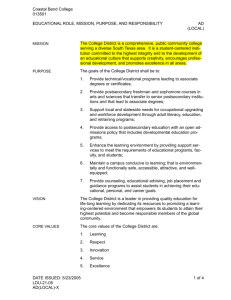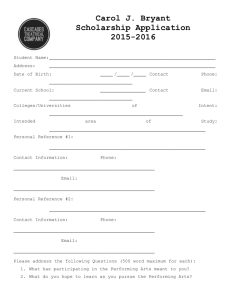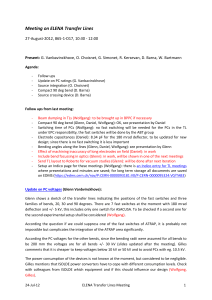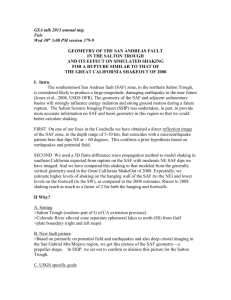GSA abstract FINAL
advertisement
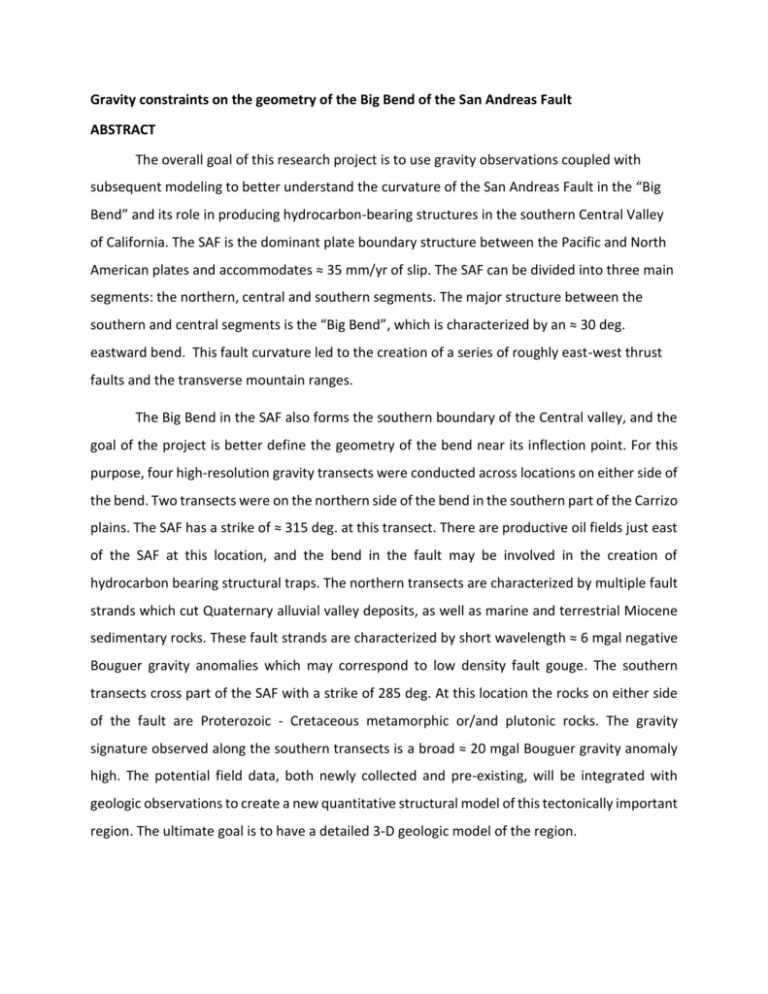
Gravity constraints on the geometry of the Big Bend of the San Andreas Fault ABSTRACT The overall goal of this research project is to use gravity observations coupled with subsequent modeling to better understand the curvature of the San Andreas Fault in the “Big Bend” and its role in producing hydrocarbon-bearing structures in the southern Central Valley of California. The SAF is the dominant plate boundary structure between the Pacific and North American plates and accommodates ≈ 35 mm/yr of slip. The SAF can be divided into three main segments: the northern, central and southern segments. The major structure between the southern and central segments is the “Big Bend”, which is characterized by an ≈ 30 deg. eastward bend. This fault curvature led to the creation of a series of roughly east-west thrust faults and the transverse mountain ranges. The Big Bend in the SAF also forms the southern boundary of the Central valley, and the goal of the project is better define the geometry of the bend near its inflection point. For this purpose, four high-resolution gravity transects were conducted across locations on either side of the bend. Two transects were on the northern side of the bend in the southern part of the Carrizo plains. The SAF has a strike of ≈ 315 deg. at this transect. There are productive oil fields just east of the SAF at this location, and the bend in the fault may be involved in the creation of hydrocarbon bearing structural traps. The northern transects are characterized by multiple fault strands which cut Quaternary alluvial valley deposits, as well as marine and terrestrial Miocene sedimentary rocks. These fault strands are characterized by short wavelength ≈ 6 mgal negative Bouguer gravity anomalies which may correspond to low density fault gouge. The southern transects cross part of the SAF with a strike of 285 deg. At this location the rocks on either side of the fault are Proterozoic - Cretaceous metamorphic or/and plutonic rocks. The gravity signature observed along the southern transects is a broad ≈ 20 mgal Bouguer gravity anomaly high. The potential field data, both newly collected and pre-existing, will be integrated with geologic observations to create a new quantitative structural model of this tectonically important region. The ultimate goal is to have a detailed 3-D geologic model of the region.




